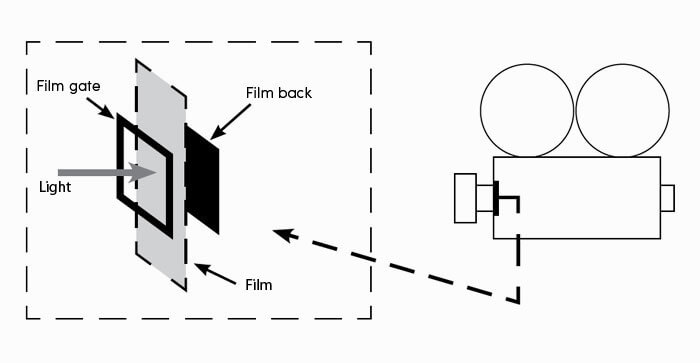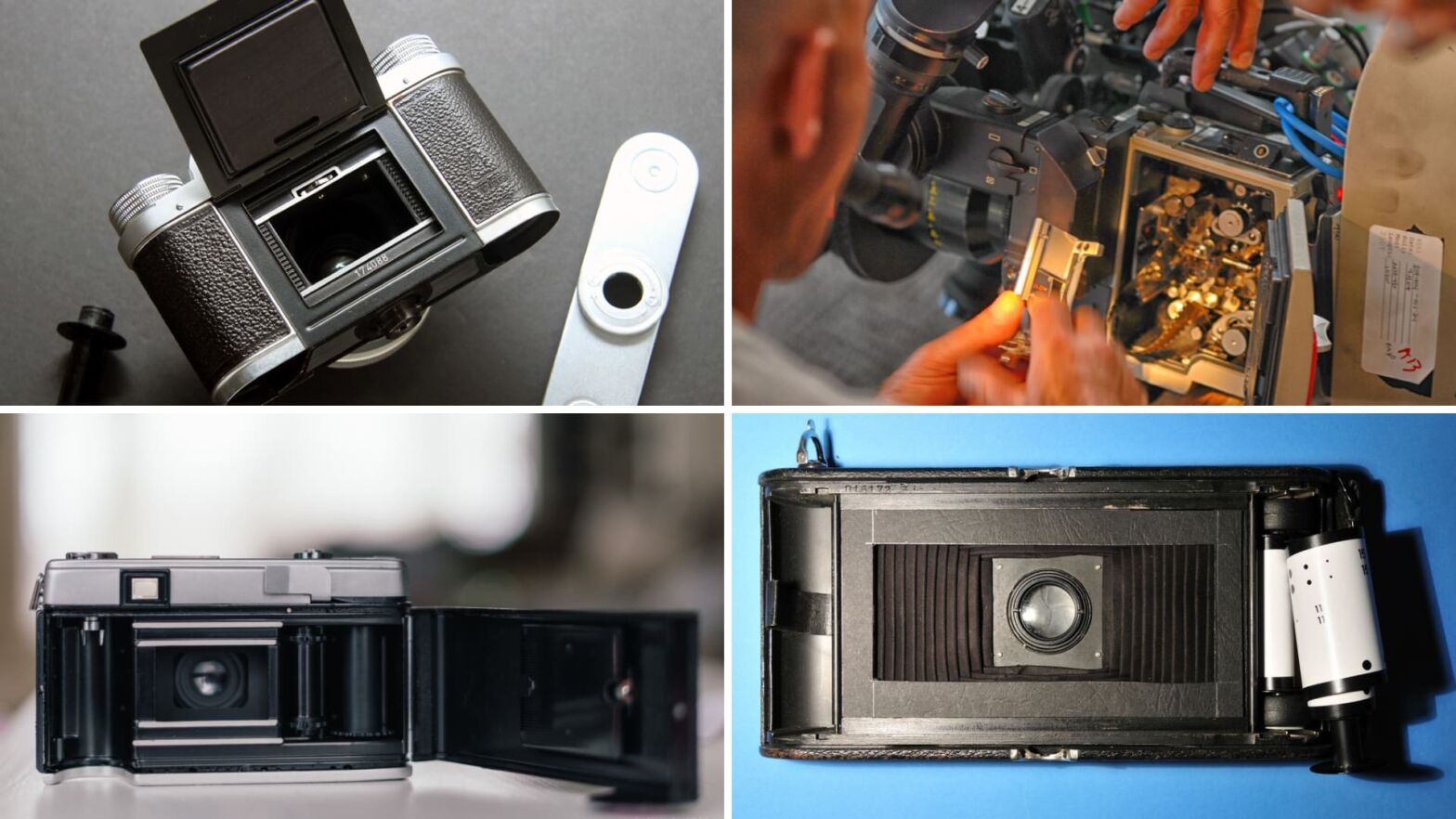Cameras have a lot of moving parts, be them a way to keep film rolling or to provide you with an image on your display. Among those moving parts are components that ensure everything looks good on your end when you’re filming something. One of those components is a film gate, which can be easily referred to as a “window” for the camera. So what is a film gate and what has it been used for?
Defining Open Gate Camera
Camera mechanism basics
A basic definition of film gate will provide the literal explanation of what an open gate camera is. It will also prepare you for learning a bit more about what a film gate does and how it is used. For while it is a literal piece of equipment, a camera's gate serves at least two traditional purposes.
FILM GATE DEFINITION
What is a film gate?
A film gate is a piece of metal framing behind the lens that lets light into the camera. With cameras that hold physical film, a film gate holds the front face of the celluloid. Film gates also double as literal frames that can determine a movie’s aspect ratio; as a result, the dimensions and size of the film gate can be adjusted through masking of the frame.
Film gate characteristics:
- A square piece of metal that allows light to pass into the camera; can be seen by removing the lens and shutter.
- Provides a natural aspect ratio, with 1.37:1 (16mm x 22mm); can be masked to 1.66, 1.85, or even 2.39.
- Hair getting into the gate and onto the finished film as a result (a common sight in older films shot on physical celluloid).
Now that we have a basic film gate definition, let's look at this mechanism in action. The following video shows the gate for a Panascope 8 projector but the mechanism functions the same way in a film camera.
Panascope 8 Projector Film Gate
So, now what know what a film gate looks like, let's get into specifics about the crucial role it plays in a camera's ability to capture motion pictures.
Check the Gate History
Why we use a film gate
We want to start this section off by showing you an example of a film gate and how to check the gate. In this way, you can understand its placement and how it is often used when dealing with physical film.

Check the gate example
Its primary job is to allow light to enter the film strip, in conjunction with the shutter and lens of the camera. It also holds the film strip in place as it is passing through the camera.
The other big job of film gate is to provide you with an aspect ratio. Way back when, this was your common Academy ratio in 1.37:1, which stayed that way for decades. As a result, gate dimensions did not change very much during this time, for they had no need to.
Over time, when the widescreen revolution hit with CinemaScope, film gate sizes for major movies began to change a bit. Where they once would have stuck to a traditional 16mm x 22mm for 1.37, major studios had more room to experiment by masking their film gates to 1.66, 1.75, 1.85, 2:1, and even 2.39.
You can learn a lot more about how different aspect ratios are used to help tell different stories.
How to Choose the Most Cinematic Aspect Ratio • Subscribe on YouTube
One of the big leaps during this widescreen revolution came from large film stock (like IMAX), which meant larger film gates. Larger film stock and larger film gates meant more image space for the cameras to take advantage of.
And with greater space meant higher quality imagery, something 70mm films famously took advantage of.
Related Posts
Film Gate Production Woes
Film gates and "hair"
For all the advances film gates had, there was one major problem whose legacy lives on to this very day: hair.
If you have ever seen a physical film reel or digital print of one, there is a very likely chance you have caught a "hair" in the frame. Sometimes it’s there for a few seconds, other times it just hangs there for what feels like minutes.
Especially with unrestored and unclean prints, it’s a common sight that accompanies the physical film. This video gives us a great example.
Film Gate & Hair
Now, this isn’t actually a hair follicle, but rather a piece of the celluloid film that gets spliced off during filming. That little piece sticks around until someone yells “CUT” to take a look. Thus, it was not uncommon, after a shot was filmed, for to have assistants check the gate to see if it was clean.
The biggest issue behind hair in the film gate is that it ruins the shot, or at least prevents it from looking clean. While avoidable with enough care and oversight from the crew, it’s pretty much impossible to remove once it is “burned” onto the film itself.
Modern digital technology makes it easier to remove hairs in post-production, but it still remains incredibly difficult to remove, in comparison to pops, hiss, dirt, and scratches.
In the world of digital photography, film gate production has made way for digital sensors. They accomplish a similar job without needing physical film; the adjustment of an aspect ratio is also changed, as it is no longer determined by unneeded film stock or the gate itself. That said, sensors still let in light the same way a gate does, so that job responsibility still applies. Also, less chance of hair getting in the way to ruin a shot.
Read more on how to clean a camera sensor.
UP NEXT
How a camera sensor works
Now that you know a bit more about film gate production (and the hair involved), it’s time to learn more about their digital equivalent. We explain what a digital sensor is, the sizes they come in, and what features they bring with them.
Up Next: Camera sensors explained →
Showcase your vision with elegant shot lists and storyboards.
Create robust and customizable shot lists. Upload images to make storyboards and slideshows.
